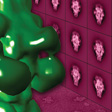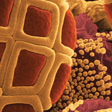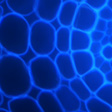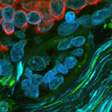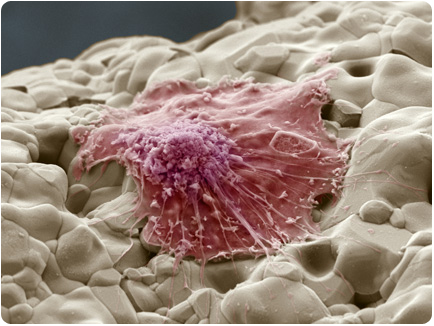 Osteoblast, or bone-forming cell, growing on a new type of bone scaffold being developed to repair damaged bones. The scaffold is made of calcium oxide and silicon dioxide with added strontium and zinc to help the bone cells to grow better.
Osteoblast, or bone-forming cell, growing on a new type of bone scaffold being developed to repair damaged bones. The scaffold is made of calcium oxide and silicon dioxide with added strontium and zinc to help the bone cells to grow better.
Visualised using scanning electron microscopy by Dr Guocheng Wang and Dr Zufu Lu, University of Sydney.
Size: the cell is about 23 micrometres wide.
The design of the scaffold was driven by the need for better materials for bone tissue engineering and regeneration. The material is called Hardystonite (HT) and is a biocompatible material developed in A/Prof. Hala Zreiqat's group at the University of Sydney. What makes it so special is the zinc and strontium included in the synthesis. These are slowly released into body fluid, helping osteoblasts to grow. The strontium not only enhances activity of osteoblasts (bone forming cells) but it also suppresses the activity of cells that destroy bone (osteoclasts). This gives a graft of HT a really good chance of succeeding. Interested scientists can view the published study




